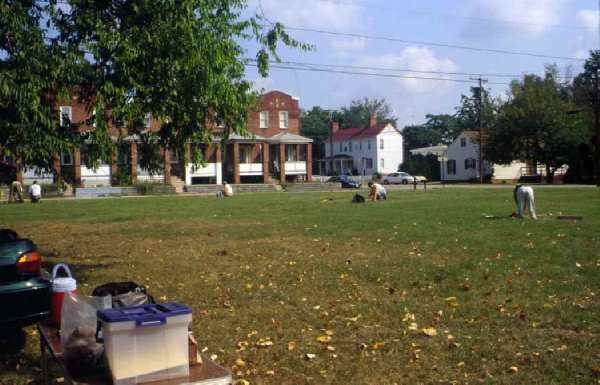Shovel Tests
These small, initial pits are a common and effective way to assess what a project area has to offer and how best to proceed with larger-scale excavations. The typical shovel test is about the diameter of a dinner plate and generally no more than knee-deep. All soil from the test is sifted through quarter inch wire mesh to recover artifacts. The kinds of artifacts in each test is recorded, along with a description of the stratigraphy (layers of soil) exposed in the pit wall. Information about the contents of each shovel test can be entered into a computer mapping program that pinpoints areas with high concentrations of artifacts. “Hot spots” are shown with closely spaced contour lines, similar to the way a topographic map shows steep slopes.
















